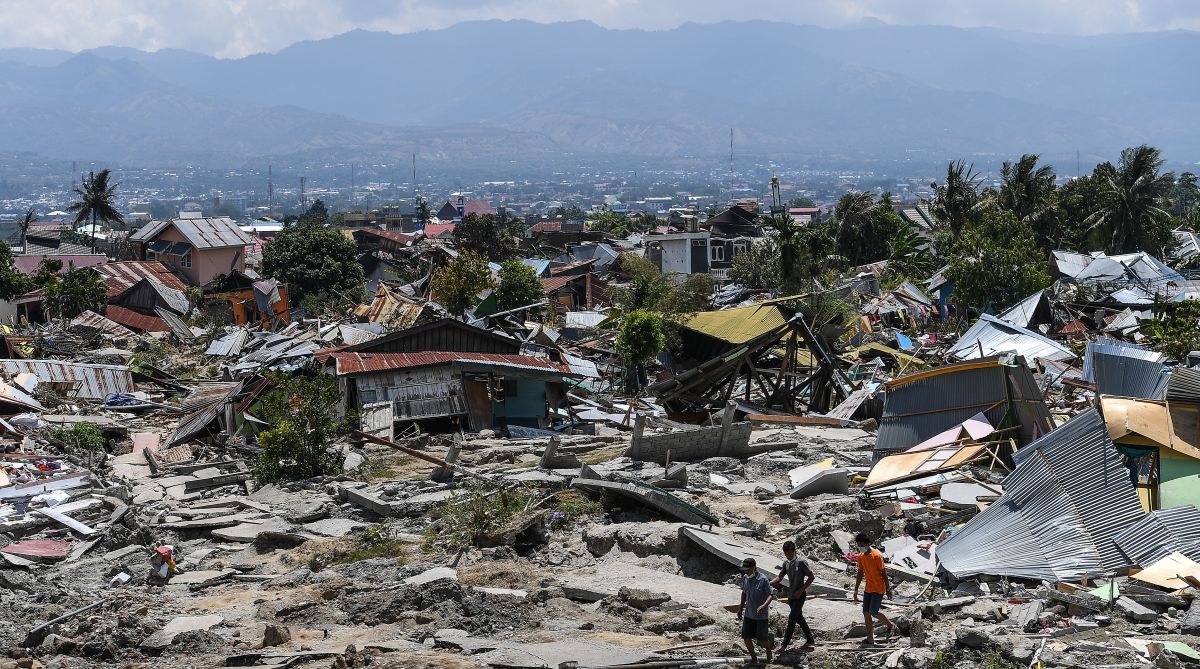India’s top 500 pvt cos value more than total GDP: Report
These companies value higher than the GDP of India and the combined GDPs of UAE, Indonesia, and Spain.

Residents walk amid debris in Perumnas Balaroa village in Palu, Indonesia's Central Sulawesi on October 2, 2018, after an earthquake and tsunami hit the area on September 28. (Photo: AFP)
Indonesia bears witness to apocalyptic scenes close to 14 years after the deaths of thousands in the Asian tsunami of 26 December 2004. The death toll in the earthquake and tsunami that hit the city of Palu last weekend has crossed 840, and is bound to rise as the search for survivors has intensified and relatives of the missing have started rummaging the body-bags.
The tragedy is both the same and different, however. In comparison to 2004, when the tsunami was far more extensive, devastating parts of southern India and the Andaman and Nicobar Islands, the catastrophe has this time around been confined to an Indonesian city. Which makes the latest tragedy still more horrendous, recalling the reported shift in the latitude of Phuket in Thailand. For all the phenomenal progress of science, it is virtually impossible to advance even a faint warning on tsunami. Even a quake can defy a weather forecast.
Advertisement
This was palpable in 2004 and was equally obvious last Friday. Yet the world must give it to the authorities of Indonesia that rescue operations have sought to match the enormity of the tragedy. The operations have, however, been hobbled due to difficulties in reaching the worst affected areas; the lack of heavy machinery has rendered it difficult to retrieve corpses from the rubble.
Advertisement
The mass graves are an awesome testament to the scale and intensity of the strike. Instructions were given to prepare for up to 1,300 victims to be buried,
in order to stave off the spread of disease. There is an overriding anxiety to ensure that mass burials are done as soon as possible for health and religious reasons in a predominantly Muslim country.
More gut-churning details are bound to emerge over the next few days as rescue workers are yet to reach all the affected areas of Palu. Indonesia confronts a crisis and calls for humanitarian intervention in the profoundest sense of the term.
The quake is said to have caused a phenomenon called “liquefaction”, when loose, water-filled soil near the surface loses its strength and subsides, causing all structures built on it to collapse. “Our teams took 12 to 15 hours to get in and so it is going to be a while before even the assessment is done and we get a true picture of the situation,” was the lament of Jan Gelfand, the head of the Red Cross office in Jakarta. In parallel to the rescue effort has been the crisis over life’s essentials.
Victims are looting shops for such basics as food, water, medicines, and fuel. Thousands have gathered at Palu airport in a desperate attempt to get a flight out. “We have not eaten for three days,” one woman screamed. “We just want to be safe.” This just about sums up the crisis in Indonesia today. It is fervently to be hoped that the comity of nations will respond to President Joko Widodo’s appeal for assistance.
Advertisement